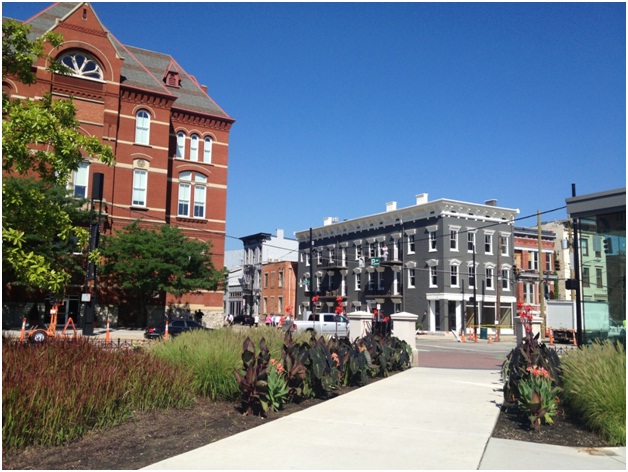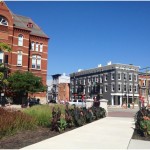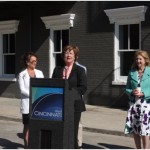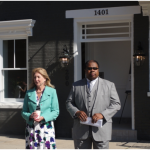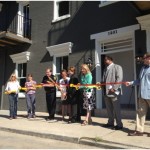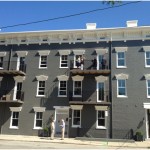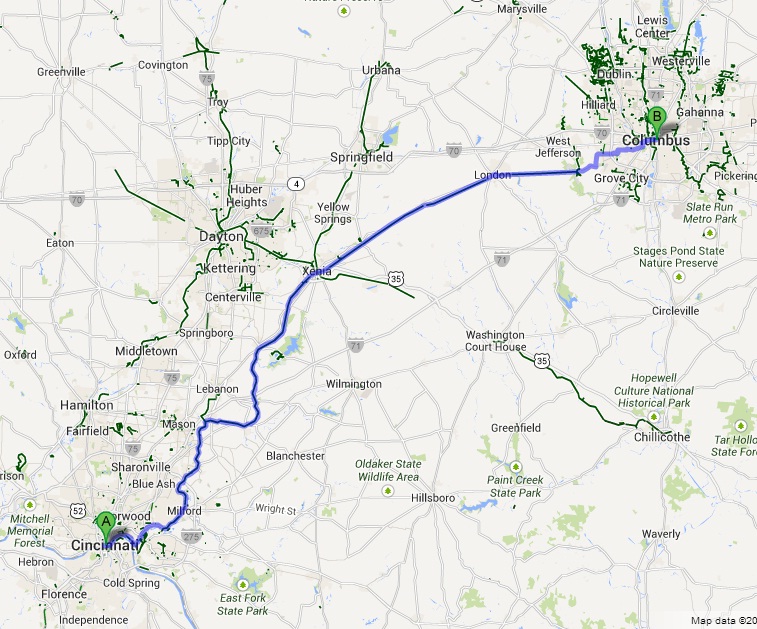Ninety years after the founding of the City of Cincinnati, in a day when Over-the-Rhine was home to over 40 breweries and Barney Kroger was still writing his business plan; three men sat in a saloon along Vine Street finalizing the design for Music Hall and a property adjacent: 1401 Elm Street.
The triage of architect Samuel Hannaford, Cincinnati political boss George Cox, and construction contractor George Hummel built 1401 as mixed-use development. In addition to multi-family homes, the property included the Hummel Family Market and the ever-popular Hummel Saloon.
Erected in 1878, the structure has withstood the test of time allowing for modern-day developers, Cincinnati Center City Development Corporation (3CDC), Hudepohl Construction, and Grandin Properties to rehabilitate it 135 years later.
The $1.6 million project was celebrated with a ribbon cutting ceremony attended by Chad Munitz, Executive Vice President of 3CDC, Vice Mayor Roxanne Qualls (C), Cincinnati City Manager Milton Dohoney, Councilmember Laure Quinlivan (D), and Peg Wyant of Grandin Properties.
The Hummel Building, which is now home to a 1,900 square-foot restaurant space and four condominiums priced from $270,000 to $375,000, is also the first Over-the-Rhine project for Grandin Properties.
A company best known for their work in upscale suburban neighborhoods such as Hyde Park, Grandin invested in 1401 Elm for both its historic significance and recent resurgence of the urban lifestyle.
“Cincinnati is reinventing itself as a hub of influence and innovation,” stated Grandin CEO, Peg Wyant at the ribbon cutting ceremony last week. “Grandin Properties is very pleased to be a part of it.”
Just around the corner from the Hummel Building, crews continued roadwork in preparation for the Cincinnati Streetcar.
“It is exciting to see this property link up with the streetcar,” noted City Manager Milton Dohoney. “Great things happen as we continue to invest in the city with the help of 3CDC.”
The Hummel Building is the second of seven projects to be completed during the fifth phase of 3DCDC’s redevelopment work in Over-the-Rhine. Other properties include Republic Street Lofts, Tea Company Townhomes, Westfalen II, B-Side Lofts, Mercer Commons, and Nicolay, as well as the Bakery Lofts which opened earlier this year. Hummel’s first floor restaurant is slated for a public debut on November 26, 2013.
The City of Cincinnati and 3CDC have financed more than $315 million in redeveloping Over-the-Rhine since 2009. The 110-square block neighborhood is home to the largest concentration of historic structures in the United States: 943 buildings. To date, 103 of those buildings have been restored or stabilized through the work of 3CDC.
